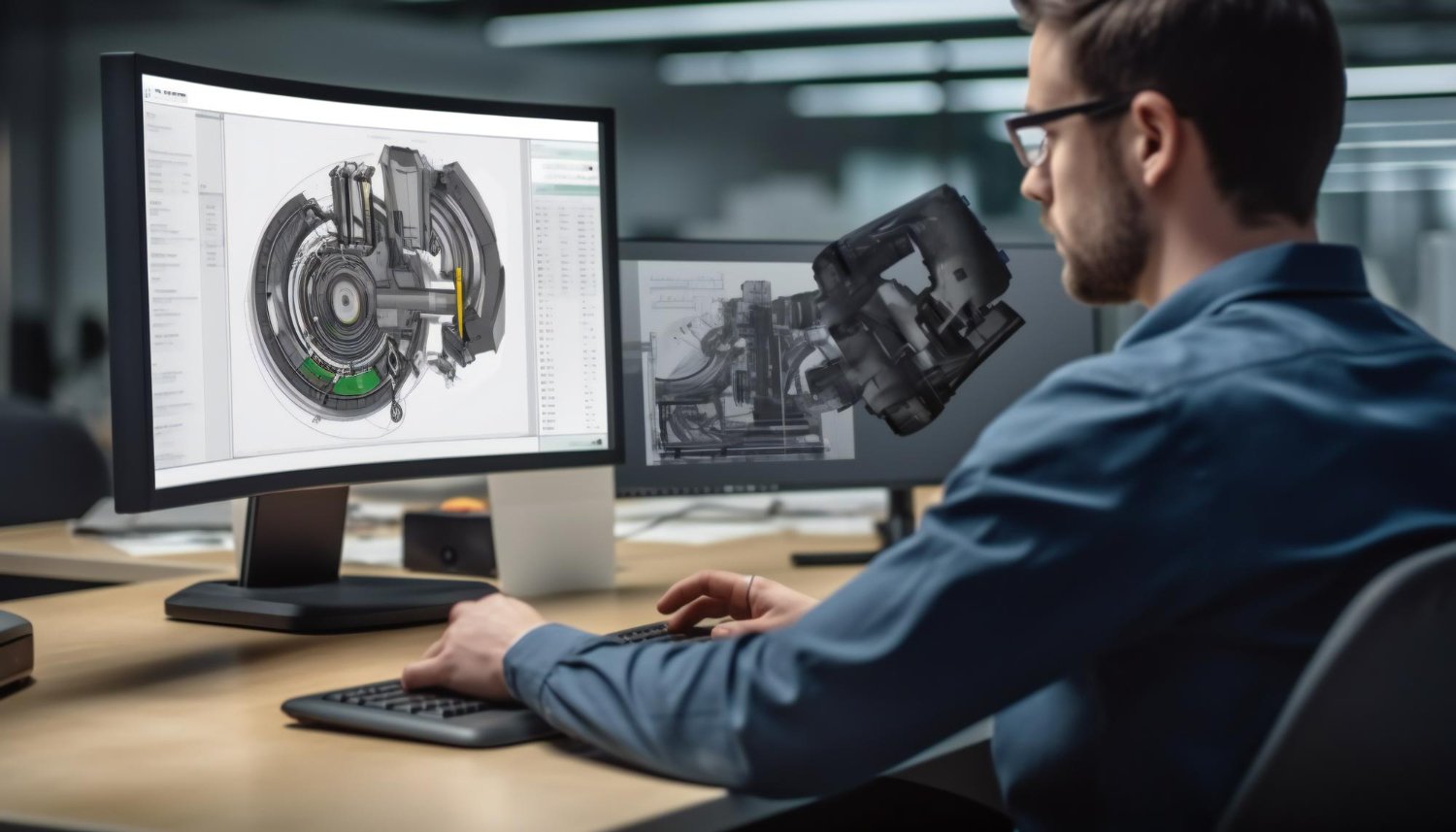
In the domain of industrial engineering, efficient design processes are important for enhancing productivity and reducing time-to-market. Spur gears, omnipresent in mechanical systems, require meticulous design considerations. Conventional Computer-Aided Design (CAD) methods for modelling spur gears often involve repetitive and time-consuming tasks. However, the emergence of automation tools presents an opportunity to transform this process.
Continue reading to explore the development of a CAD modelling automation tool for spur gear design within SolidWorks, tailored to the requirements of industrial engineers.
The emerging need for automation in spur gear design arises from several critical factors. Traditionally, engineers have relied on manual processes for designing spur gears using CAD software. However, this approach has its limitations and inefficiencies:
Complex Calculations: Designing spur gears involves intricate mathematical calculations to determine parameters such as tooth size, pitch, and profile. Performing these calculations manually can be time-consuming and prone to errors, especially for gears with non-standard configurations or specific requirements.
Manual Geometry Creation: Creating the geometric profiles of spur gears manually within CAD software is a meticulous task. Engineers need to input dimensions accurately and ensure that the gear teeth mesh correctly to transmit motion smoothly. This process requires a significant amount of time and attention to detail.
Repetitive Adjustments: Iterative refinement is often necessary during the gear design process to achieve optimal performance and durability. Engineers may need to make repetitive adjustments to parameters such as tooth profile, backlash, and pressure angle until the desired specifications are met. Manually carrying out these adjustments can be tedious and prone to inconsistencies.
Error Prone: Human error is a significant risk in manual gear design processes. Even small mistakes in calculation or geometry creation can lead to substantial issues in gear functionality, resulting in costly rework or even equipment failure in industrial applications.
Resource Consumption: Manual gear design processes consume valuable human resources and time that could be allocated to more strategic and creative tasks. As industries strive for efficiency and productivity, there is a growing recognition of the need to streamline design workflows and minimise resource expenditure.
To address these challenges, industrial engineers are increasingly turning to automation technologies. Automated approaches leverage algorithms and computational techniques to streamline the gear design process, reducing reliance on manual input and minimising the risk of errors.
By automating calculations, geometry creation, and iterative adjustments, engineers can expedite the design process while ensuring precision and consistency in the final product. This not only saves time and resources but also enhances the overall quality and reliability of spur gears, meeting the demands of modern industrial applications.
The CAD modelling automation tool developed for SolidWorks encompasses several key features to streamline spur gear design, which are as follows:
Parameterised Input: Users input gear specifications such as module, number of teeth, pressure angle, and profile shift coefficient, simplifying the customisation process.
Algorithmic Calculations: The tool integrates algorithms to compute gear dimensions, tooth profiles, and other critical parameters based on user inputs, eliminating the need for manual calculations.
Dynamic Modelling: Leveraging SolidWorks’ parametric modelling capabilities, the tool generates gear models dynamically, enabling users to visualise design changes instantly.
Customisation Options: Engineers can customise gear designs by adjusting parameters such as tooth profile modification, backlash, and clearance, ensuring compatibility with specific application requirements.
Design Validation: The tool incorporates validation mechanisms to evaluate gear performance based on criteria like tooth strength, contact ratio, and backlash, empowering engineers to optimise designs for reliability and efficiency.
The development of the CAD modelling automation tool involved several key steps:
Requirement Analysis: Collaborating with industrial engineers to comprehend design requirements and challenges associated with spur gear modelling.
Algorithm Design: Designing algorithms to calculate gear dimensions, tooth profiles, and other parameters based on industry-standard formulas and design guidelines.
Software Integration: Integrating the automation tool seamlessly within the SolidWorks environment, utilising APIs and scripting capabilities for robust functionality.
User Interface Design: Designing an intuitive user interface within SolidWorks to facilitate ease of use and efficient interaction with the automation tool.
Testing and Validation: Conducting rigorous testing to ensure the accuracy, reliability, and performance of the automation tool across various design scenarios and parameters.
The implementation of the CAD modelling automation tool in SolidWorks offers significant benefits to industrial engineers:
Time Efficiency: Automation reduces design cycle times, enabling engineers to iterate and refine designs rapidly.
Accuracy and Consistency: Automation eradicates human errors inherent in manual design processes, ensuring consistent and precise gear geometries.
Design Optimisation: Engineers can explore a broader range of design possibilities and promptly evaluate their impact on performance metrics, leading to optimised gear designs.
Enhanced Productivity: By automating repetitive tasks, engineers can focus on higher-value activities such as innovation and problem-solving, enhancing overall productivity.
Knowledge Transfer: The automation tool encapsulates domain knowledge and best practices, facilitating knowledge transfer among engineering teams and expediting onboarding for new engineers.

The development of a CAD modelling automation tool for spur gear design in SolidWorks represents a significant advancement in rationalising design processes for industrial engineers. By harnessing automation, engineers can expedite design iterations, enhance accuracy, and optimise gear performance, ultimately driving efficiency and innovation in mechanical systems design and manufacturing. As automation evolves, its integration into CAD environments will empower engineers and redefine the landscape of engineering design.